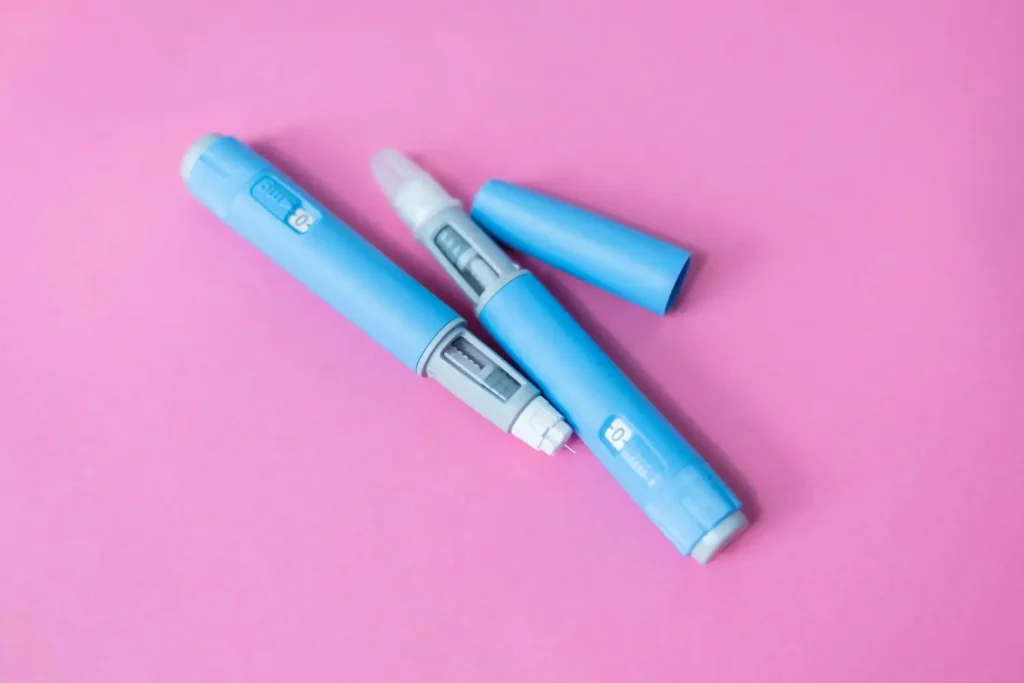Glaucoma is a leading cause of irreversible blindness worldwide, affecting approximately 80 million people globally. This group of eye diseases is characterized by increased intraocular pressure (IOP), which can damage the optic nerve and lead to vision loss if left untreated. Early diagnosis and effective management are crucial for preserving vision.
One effective treatment for managing glaucoma is Lumigan eye drops, a prostaglandin analog that helps lower IOP by increasing the outflow of aqueous humor.
In this article, we will explore Lumigan’s critical aspects as a glaucoma treatment, including its mechanism of action, benefits, potential side effects, and important considerations for patients and healthcare providers.
Key Takeaways
- Glaucoma is a group of eye conditions that damage the optic nerve, often leading to vision loss. Early detection through regular eye exams is crucial for effective treatment.
- Lumigan eye drops, containing the active ingredient bimatoprost, are a prostaglandin analog that effectively lowers intraocular pressure (IOP) by increasing the outflow of aqueous humor.
- Controlling IOP is vital in preventing vision loss in glaucoma patients, and effective IOP control with Lumigan plays a significant role in protecting the optic nerve.
- When using Lumigan, patients may experience side effects such as eye redness, itching, and increased pigmentation, which can usually be managed with continued use and appropriate care.
About: Medical Spa RX provides medical practices with premium products at the best prices. If you’re looking to buy Lumigan for your practice, the sales representatives at Medical Spa RX can give you guidance.
What is Glaucoma?

Glaucoma is a group of eye conditions that damage the optic nerve, often leading to vision loss. The most common form is open-angle glaucoma, which develops slowly and without pain.
The optic nerve is crucial for vision, and glaucoma can lead to blindness if not treated early. Most types of glaucoma show no early signs, making regular eye exams essential for early detection. Open-angle glaucoma accounts for about 90% of cases in the U.S., but other types, such as angle-closure glaucoma, require immediate attention as they can rapidly and severely damage the eyes.
Managing Intraocular Pressure (IOP) to Prevent Vision Loss

Controlling intraocular pressure (IOP) is a vital part of treating glaucoma. This helps stop vision from getting worse. Lumigan or bimatoprost is a medication specifically designed to lower high IOP levels in patients with open-angle glaucoma or ocular hypertension.
Effective IOP control is crucial because it helps prevent damage to the optic nerve, a major cause of vision loss in glaucoma patients. Lumigan offers a reliable solution for doctors to manage IOP and protect patients’ vision.
Untreated high IOP can severely damage the optic nerve, leading to irreversible vision loss or blindness. Many individuals face this risk yearly due to inadequate treatment of their eye pressure. Without proper care, high IOP associated with open-angle glaucoma and ocular hypertension can result in permanent optic nerve damage and significant loss of sight.
Understanding Lumigan and Bimatoprost

Lumigan is a significant treatment for combating glaucoma and ocular hypertension by addressing elevated intraocular pressure (IOP). This medication is classified as a prostaglandin analog. Physicians prescribe Lumigan as an ophthalmic solution at a concentration of 0.01%. It works by enhancing the outflow of aqueous humor, effectively reducing IOP and protecting the optic nerve from damage.
The active ingredient in Lumigan, bimatoprost, plays a crucial role in lowering IOP levels in individuals with open-angle glaucoma or ocular hypertension. Its efficacy in decreasing IOP helps prevent optic nerve damage and subsequent vision loss.
Mechanism of Action
Lumigan works primarily by increasing the outflow of aqueous humor, the fluid inside the eye. This enhanced outflow occurs through two pathways: the trabecular meshwork and the uveoscleral route. By facilitating the drainage of aqueous humor, Lumigan effectively reduces intraocular pressure (IOP), which is a critical factor in managing glaucoma and ocular hypertension.
Reducing IOP is essential for protecting the optic nerve, as elevated pressure can lead to optic nerve damage and subsequent vision loss. By lowering IOP, Lumigan helps maintain optic nerve health and prevents the progression of glaucoma-related damage.
Clinical Studies and Expert Reviews
A notable trial compared Lumigan to timolol, another commonly used glaucoma medication. Lumigan consistently achieved greater IOP reduction than timolol, making it a valuable option for patients.
This large-scale, double-masked phase 3 trial evaluated patients with glaucoma or ocular hypertension. The trial assessed the safety and efficacy of once-daily (QD) or twice-daily (BID) regimens of 0.03% bimatoprost ophthalmic solution (Lumigan) compared to timolol maleate BID. The results consistently showed that Lumigan achieved greater intraocular pressure (IOP) reduction than timolol, making it a valuable option for glaucoma.
Ophthalmologists recognize Lumigan as a reliable and effective prostaglandin analog. Its once-daily dosing and favorable side effect profile contribute to patient compliance. Some experts may also recommend Lumigan as a first-line therapy due to its robust efficacy and tolerability.
Safety Profiles and Potential Side Effects
When using Lumigan to treat glaucoma or ocular hypertension, patients may experience several side effects, such as the following:
- Eye Redness: Many patients experience redness in the treated eye, which usually subsides with continued use. Applying a cool compress can help alleviate redness.
- Itching or Discomfort: Some users report mild itching or discomfort shortly after application. Over-the-counter lubricating eye drops can provide relief.
- Increased Pigmentation: Darkening of the iris and eyelid skin can occur with prolonged use. This change is usually gradual and may be permanent.
- Eyelash Changes: Lumigan can cause increased growth, thickness, and darkness of eyelashes.
Rare Side Effects
- Eye Pain: In rare cases, patients may experience significant eye pain or discomfort.
- Vision Changes: Blurred vision or changes in vision can occur, although these are less common.
- Allergic Reactions: Some individuals might experience allergic reactions characterized by swelling or rash.
- Increased IOP: Paradoxically, some patients may have increased intraocular pressure.
Regular follow-ups with your healthcare provider will help monitor eye pressure and overall eye health. Patients should seek medical attention if they experience the following:
- Significant eye pain or discomfort.
- Sudden vision changes.
- Symptoms of an allergic reaction.
- Signs of increased IOP, such as severe headache or blurred changes.
Patient Outcomes and Experiences
Patients generally report positive outcomes with Lumigan, noting significant reductions in intraocular pressure and effective glaucoma and ocular hypertension management. Many also appreciate the added cosmetic benefit of longer, thicker eyelashes. However, consistent monitoring by healthcare providers is essential to manage and mitigate any potential side effects.
Patient Selection and Considerations
Lumigan is indicated for patients with open-angle glaucoma or ocular hypertension. Suitable candidates are those with elevated intraocular pressure (IOP) that requires management. More importantly, patients must be committed to daily eye drop administration.
Certain patient groups should take precautions or avoid using Lumigan:
- Patients with Hypersensitivity: Individuals allergic to bimatoprost or any other ingredient in Lumigan should not use this medication.
- Pregnant or Breastfeeding Women: Lumigan’s safety during pregnancy and breastfeeding is not well-established. Consultation with an ophthalmologist is essential for pregnant or nursing individuals.
- Patients with Active Eye Infections: To prevent exacerbation, patients with active ocular infections should avoid using Lumigan until the infection has resolved.
- Patients with a History of Macular Edema: Those with macular edema or risk factors for macular edema should use Lumigan with caution, as it may exacerbate this condition.
Dosage and Administration Techniques
Lumigan is available in a 0.03% solution, and the typical recommended dosage for glaucoma or ocular hypertension is one drop in the affected eye(s) once daily in the evening. However, it’s important to note that dosage adjustments may be necessary based on individual response and IOP control.
Proper Administration Techniques
- Wash Hands: Before applying Lumigan, thoroughly wash your hands to prevent contamination.
- Remove Contact Lenses: If you wear contact lenses, remove them before using Lumigan. Wait at least 15 minutes after using Lumigan before reinserting lenses.
- Tilt Head Back: Tilt your head backward and look up at the ceiling.
- Pull Down Lower Eyelid: Pull down your lower eyelid to create a small pocket.
- Instill One Drop: Squeeze the Lumigan bottle to release a single drop into the pocket formed by the lower eyelid. Avoid touching the eye or eyelashes with the dropper tip.
- Close Eye Slowly: Close your eye slowly to allow the medication to spread evenly across the eye surface.
- Press on Inner Corner: Lightly press on the inner corner of the eye (near the nose) for about 1 minute. This helps prevent excess drainage of the medication into the tear duct.
- Wipe Excess Liquid: Use a clean tissue to wipe away any excess liquid around the eye.
Conclusion
Lumigan provides a crucial option for those battling glaucoma or high eye pressure. When used properly, it effectively lowers eye pressure, helping to prevent vision problems. While side effects can occur, they can be managed effectively with informed choices and regular check-ups.
Safeguarding your vision with the right treatment plan is essential. Discuss all details with your healthcare provider to achieve the best outcomes.
FAQs
1. What is Lumigan, and how does it treat glaucoma?
Lumigan is a medication used to lower eye pressure, which can help prevent vision loss in people with glaucoma.
2. How should I use Lumigan for my glaucoma treatment?
You apply Lumigan as an eye drop usually once daily. It’s crucial to follow your doctor’s instructions closely.
3. Are there side effects I should know about with Lumigan?
Yes, some people experience redness or itchiness in their eyes when using Lumigan. So, consistently report any discomfort to your doctor.
4. Can anyone use Lumigan to treat glaucoma?
Some conditions may make you unsuitable for this treatment, so discussing your medical history with the healthcare provider before starting is essential.
References
Glaucoma. Johns Hopkins Medicine. https://www.hopkinsmedicine.org/health/conditions-and-diseases/glaucoma
National Eye Institute. (n.d.). Types of glaucoma. National Institutes of Health. Retrieved August 2, 2024, from https://www.nei.nih.gov/learn-about-eye-health/eye-conditions-and-diseases/glaucoma/types-glaucoma
National Eye Institute. (n.d.). Glaucoma. National Institutes of Health. Retrieved August 2, 2024, from https://www.nei.nih.gov/learn-about-eye-health/eye-conditions-and-diseases/glaucoma





















